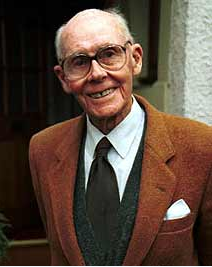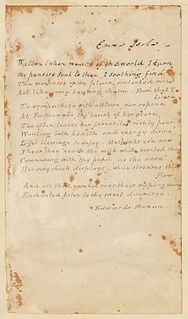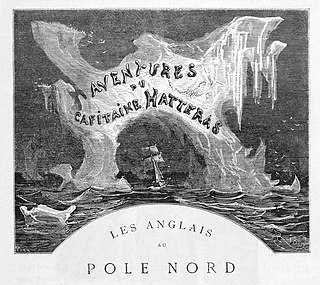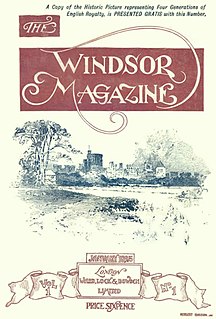Related Research Articles

Enid Mary Blyton was an English children's writer whose books have been among the world's best-sellers since the 1930s, selling more than 600 million copies. Enid's books are still enormously popular, and have been translated into 90 languages. She wrote on a wide range of topics including education, natural history, fantasy, mystery, and biblical narratives and is best remembered today for her Noddy, Famous Five and Secret Seven series.

Nigel Tranter OBE was an author who wrote a wide range of books on castles, particularly on themes of architecture and history. He also specialised in deeply researched historical novels that cover centuries of Scottish history.

Isabella Mary Beeton, known as Mrs Beeton, was an English journalist, editor and writer. Her name is particularly associated with her first book, the 1861 work Mrs Beeton's Book of Household Management. She was born in London and, after schooling in Islington, north London, and Heidelberg, Germany, she married Samuel Orchart Beeton, an ambitious publisher and magazine editor.

Edward Moxon was a British poet and publisher, significant in Victorian literature.

A Study in Scarlet is an 1887 detective novel written by Arthur Conan Doyle. The story marks the first appearance of Sherlock Holmes and Dr. Watson, who would become the most famous detective duo in popular fiction. The book's title derives from a speech given by Holmes, a consulting detective, to his friend and chronicler Watson on the nature of his work, in which he describes the story's murder investigation as his "study in scarlet": "There's the scarlet thread of murder running through the colourless skein of life, and our duty is to unravel it, and isolate it, and expose every inch of it."

The book best known as Mrs Beeton's Book of Household Management, also published as Mrs Beeton's Cookery Book, is an extensive guide to running a household in Victorian Britain, edited by Isabella Beeton and first published as a book in 1861. Previously published in parts, it initially and briefly bore the title Beeton's Book of Household Management, as one of the series of guide-books published by her husband, Samuel Beeton. The recipes were highly structured, in contrast to those in earlier cookbooks. It was illustrated with many monochrome and colour plates.
Hutchinson was a British publishing firm which operated from 1887 until 1985, when it underwent several mergers. It is currently an imprint which is ultimately owned by Bertelsmann, the German publishing conglomerate.

Jonathan Cape is a London publishing firm founded in 1921 by Herbert Jonathan Cape, who was head of the firm until his death in 1960.

Routledge is a British multinational publisher. It was founded in 1836 by George Routledge, and specialises in providing academic books, journals and online resources in the fields of humanities, behavioural science, education, law, and social science. The company publishes approximately 1,800 journals and 5,000 new books each year and their backlist encompasses over 70,000 titles. Routledge is claimed to be the largest global academic publisher within humanities and social sciences.

Hodder & Stoughton is a British publishing house, now an imprint of Hachette.
George Bell & Sons was a book publishing house located in London, United Kingdom, from 1839 to 1986.

The Adventures of Captain Hatteras is an adventure novel by Jules Verne in two parts: The English at the North Pole and The desert of ice.
Nigel Tranter wrote over 100 books. He is best known for his Scottish historical novels and his five-volume work The Fortified House in Scotland, but he also produced many other novels, particularly early on in his career.
Frederick Warne & Co. is a British publisher founded in 1865. It is famous for children's books, particularly those of Beatrix Potter, and for its Observer's Books, which have gained a cult following.

Sampson Low (1797–1886) was a bookseller and publisher in London in the 19th century.

Richard Bentley was a 19th-century English publisher born into a publishing family. He started a firm with his brother in 1819. Ten years later, he went into partnership with the publisher Henry Colburn. Although the business was often successful, publishing the famous "Standard Novels" series, they ended their partnership in acrimony three years later. Bentley continued alone profitably in the 1830s and early 1840s, establishing the well-known periodical Bentley's Miscellany. However, the periodical went into decline after its editor, Charles Dickens, left. Bentley's business started to falter after 1843 and he sold many of his copyrights. Only 15 years later did it begin to recover.

The Windsor Magazine was a monthly illustrated publication produced by Ward Lock & Co from January 1895 to September 1939.
Robert Hale Limited was a London publisher of fiction and non-fiction books, founded in 1936, and also known as Robert Hale. It was based at Clerkenwell House, Clerkenwell Green. It ceased trading on 1 December 2015 and its imprints were sold to The Crowood Press.
Catherine Jane Hamilton (1841–1935) was an author and journalist who also write under the name Retlaw Spring.

Franklin Thomas Grant Richards was a British publisher and writer. After creating his own publishing firm at the age of just 24 years old, he launched The World's Classics series and published such as George Bernard Shaw, A.E. Housman, Samuel Butler and James Joyce. He made "a significant impact on the publishing business of the early twentieth century".
References
- ↑ Liveing, Edward George Downing (1954). Adventure in publishing; the House of Ward Lock, 1854-1954. London: Ward, Lock. p. 19.
- ↑ Liveing, Edward George Downing (1954). Adventure in publishing; the House of Ward Lock, 1854-1954. London: Ward, Lock. p. 19.
- ↑ Liveing, Edward George Downing (1954). Adventure in publishing; the House of Ward Lock, 1854-1954. London: Ward, Lock. p. 22.
- ↑ Liveing, Edward George Downing (1954). Adventure in publishing; the House of Ward Lock, 1854-1954. London: Ward, Lock. p. 27.
- ↑ Liveing, Edward George Downing (1954). Adventure in publishing; the House of Ward Lock, 1854-1954. London: Ward, Lock. p. 36.
- ↑ Liveing, Edward George Downing (1954). Adventure in publishing; the House of Ward Lock, 1854-1954. London: Ward, Lock. p. 37.
- ↑ Liveing, Edward George Downing (1954). Adventure in publishing; the House of Ward Lock, 1854-1954. London: Ward, Lock. p. 51.
- ↑ Liveing, Edward George Downing (1954). Adventure in publishing; the House of Ward Lock, 1854-1954. London: Ward, Lock. p. 57.
- ↑ Liveing, Edward George Downing (1954). Adventure in publishing; the House of Ward Lock, 1854-1954. London: Wad, Lock. p. 60.
- ↑ Liveing, Edward George Downing (1954). Adventure in publishing; the House of Ward Lock, 1854-1954. London: Ward, Lock. p. 67.
- ↑ Liveing, Edward George Downing (1954). Adventure in publishing; the House of Ward Lock, 1854-1954. London: Ward, Lock. p. 77.
- ↑ Dictionary of Nineteenth-century Journalism in Great Britain and Ireland Par Laurel Brake,Marysa Demoor, page 663, https://books.google.fr/books?id=qVrUTUelE6YC&pg=PA663&lpg=PA663&dq=ward+lock+tyler+1865&source=bl&ots=PYsjK8yYiH&sig=Q26XHpHt3HavUuoxB9Q5OqDdBLE&hl=fr&sa=X&ei=to9gVeywMIHzUsWigLgC&ved=0CCEQ6AEwAA#v=onepage&q=ward%20lock%20tyler%201865&f=false
- ↑ Minerva Library of Famous Books (Ward, Lock & Co.) - Book Series List, publishinghistory.com. Retrieved 21 October 2019.
- ↑ Select Library of Fiction (Ward, Lock & Co.) - Book Series List, publishinghistory.com. Retrieved 21 October 2019.
- ↑ Series of the Great Poets, owu.edu. Retrieved 21 October 2019.
- ↑ "Image : Ward, Lock & Co.'s Series of Copyright Novels : 6d". Runela.net. Archived from the original on 2012-02-20. Retrieved 2013-10-07.
- ↑ Ward, Lock and Co.’s Sevenpenny Net Novels, owu.edu. Retrieved 21 October 2019.
- ↑ Wonder Books and Modern World Books, collectingbooksandmagazines.com. Retrieved 30 November 2019.